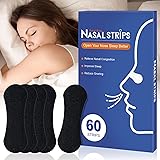Welcome to a deeper dive into the world of latex mattresses, a subject expertly introduced by Dr. Michael Breus, the Sleep Doctor, and David Rubin from thesleepdoctor.com in the accompanying video. As you may have learned, these mattresses offer a distinctive sleep experience, often lasting an impressive eight to ten years or even longer with appropriate maintenance. This exceptional durability translates into significant long-term value for consumers, a crucial consideration given that a quality latex mattress typically starts around $1500, with high-end models often exceeding $2000. Understanding these cost and longevity factors from the outset is vital for making an informed purchasing decision.
For those exploring alternatives to traditional memory foam or hybrid designs, latex presents a compelling option. Its unique performance and feel cater to a broad spectrum of sleepers, delivering robust support combined with a noticeable resilient quality. This responsive material cradles the body differently than memory foam, providing a sensation of sleeping “on” the bed rather than “in” it. Such characteristics make latex beds an excellent choice for individuals seeking both comfort and lasting support, ensuring an optimal sleep environment night after night.
Understanding Latex Mattress Types and Construction
When you start researching latex mattresses, two primary types frequently emerge: Dunlop and Talalay latex. While both are derived from the sap of rubber trees, their manufacturing processes introduce distinct differences in feel and properties. The Dunlop method involves a simpler, single-pour process where the latex is poured into a mold and then baked. This procedure generally utilizes fewer chemicals, making Dunlop latex an attractive option for consumers prioritizing the most natural product possible. Furthermore, Dunlop latex tends to be denser and offers a firmer feel, making it incredibly supportive.
Conversely, Talalay latex undergoes a more intricate process. The mold is partially filled, then vacuum-sealed, frozen, and finally baked. This additional complexity creates a more consistent cell structure within the foam, resulting in a lighter, airier, and slightly bouncier feel. Talalay latex often provides a softer initial embrace while still maintaining excellent support. Understanding these fundamental differences in manufacturing and resulting feel helps guide your decision towards the latex type that best aligns with your personal comfort preferences and support needs. Both types are celebrated for their natural origins and superior resilience.
Beyond the type of latex, you will also encounter two main construction styles for latex mattresses: all-latex models and hybrid designs. All-latex mattresses feature multiple layers of latex throughout, forming both the support core and the top comfort layers. This construction maximizes the unique benefits of latex, offering a consistent feel from top to bottom. Such models excel in providing deep, contouring support without the “sink” often associated with memory foam. The pure latex build ensures uniform responsiveness and exceptional durability.
Hybrid latex mattresses, however, combine a comfort layer of latex on top with a support core made of coils. This design integrates the buoyant, pressure-relieving qualities of latex with the traditional bounce and airflow of an innerspring system. The coil base often enhances edge support and provides a more familiar feel for those transitioning from coil-based mattresses. This combination can offer a balanced sleep surface, merging the best attributes of both materials. Your choice between all-latex and hybrid will depend on your preference for a firmer, purely latex feel versus the added spring and airflow of coils.
Who Benefits Most from a Latex Mattress?
The unique qualities of latex mattresses position them as an excellent choice for a diverse group of sleepers. One significant advantage is their exceptional responsiveness, facilitating effortless movement throughout the night. Dr. Michael Breus aptly terms this “power-assisted moving,” highlighting how easy it is to shift positions without feeling stuck. This attribute is particularly beneficial for individuals with mobility issues, as it significantly reduces the effort required to get in and out of bed or simply adjust sleeping positions. Many users report a substantial improvement in sleep quality due to this ease of movement.
Moreover, latex mattresses are highly favored by those seeking a firm sleeping surface that still provides adequate cushioning. The material helps maintain an even plane for the body, promoting optimal spinal alignment. This characteristic is especially advantageous for back and stomach sleepers who require robust support to prevent their hips from sinking too deeply, which can lead to lower back pain. Individuals with larger frames also find the consistent support of latex highly beneficial, as it resists sagging and maintains its structural integrity over time. Data suggests that proper spinal alignment can reduce instances of back pain by over 60% for many individuals.
While latex offers firm support, it is important to note its feel for lighter individuals. For sleepers under 130 lbs, a latex mattress can sometimes feel overly firm, potentially leading to pressure buildup, particularly for side sleepers. In these cases, a softer top layer or a hybrid model with a plush comfort layer might be more suitable to ensure adequate pressure relief. This consideration highlights the importance of matching mattress firmness to individual body weight and sleeping style.
Advanced Benefits: Temperature Regulation and Longevity
Another compelling benefit of latex mattresses, often overlooked, is their inherent temperature neutrality. Unlike some memory foams that tend to trap body heat, latex is relatively breathable and does not retain warmth to the same degree. This makes it an outstanding choice for individuals who typically sleep hot, helping them maintain a comfortable body temperature throughout the night. The open-cell structure of latex allows for better airflow, contributing to a cooler sleep environment. Furthermore, natural latex resists moisture absorption, which also aids in temperature control and overall mattress hygiene.
Beyond temperature regulation, the impressive longevity of natural latex mattresses stands out as a major selling point. As noted, these beds are designed to last at least eight years, with many exceeding ten years or even more with diligent care. This durability far surpasses that of many conventional mattress types, which may show signs of wear and tear much sooner. Investing in a natural latex mattress effectively reduces the frequency and cost of replacements, delivering substantial long-term value. The material’s resilience ensures that the mattress maintains its supportive properties and comfortable feel for years, making it a sustainable and economical choice.
Furthermore, latex mattresses are renowned for their excellent edge support. A sturdy perimeter is not merely a convenience; it significantly extends the usable sleeping surface of the bed. This is particularly advantageous for couples, as it allows both partners to utilize the entire width of the mattress without feeling like they might roll off. Strong edge support also assists individuals with mobility issues, making it considerably easier and safer to get in and out of bed. Enhanced edge support can increase a mattress’s effective sleep surface by up to 20%, a substantial gain for restless sleepers or those sharing a bed.
Navigating Costs and Making a Smart Purchase
While the benefits of latex mattresses are undeniable, their premium manufacturing process often translates into a higher upfront cost. As previously mentioned, you should anticipate paying around $1500 for an entry-level latex model, with prices for higher-quality or larger sizes often surpassing $2000. This investment reflects the superior materials and durability offered by natural latex. However, this initial expense is frequently offset by the mattress’s extended lifespan, which reduces the need for frequent replacements. Therefore, consider the cost of ownership over a decade rather than just the purchase price when evaluating value.
To mitigate the higher price point without compromising on quality, smart shopping strategies are essential. While it might be tempting to opt for synthetic latex models due to their lower cost, these generally do not offer the same durability or performance as their natural counterparts. Instead, consider forgoing non-essential upgrades such as premium cover materials or integrated pillow tops, which can significantly add to the price without enhancing the core benefits of the latex itself. Focusing on the foundational latex layers ensures you are paying for performance and longevity.
Savvy buyers should also pay close attention to warranties, shipping costs, and sleep trials. Many online mattress retailers offer value-boosting benefits like free shipping, generous sleep trials (often 90 to 120 nights), and hassle-free returns. These policies provide an opportunity to test the mattress in your home and ensure it meets your comfort and support needs without financial risk. Moreover, strategic timing for your purchase can lead to considerable savings. Manufacturers frequently offer their most substantial discounts during major holiday sales events, such as Memorial Day weekend, Fourth of July, Black Friday, and Cyber Monday. Planning your purchase around these periods can yield savings of 15-30% or more.
Addressing Common Concerns: Allergies and Certifications
A common concern regarding latex mattresses is their suitability for individuals with latex allergies. Dr. Michael Breus assures that for most people, latex mattresses are perfectly safe. During the manufacturing process, particularly for natural latex, the material undergoes thorough washing. This extensive cleaning effectively removes many of the allergy-triggering proteins found in raw latex. Furthermore, once the mattress is encased in its cover and topped with bedding, there is rarely any direct skin contact with the latex itself. However, for individuals with severe allergies, consulting with a healthcare professional or testing a small sample is always a prudent step.
Regardless of your mattress choice, using a high-quality mattress cover is always a recommended practice. A mattress cover acts as a protective barrier, extending the life of your mattress by shielding it from spills, stains, dust mites, and allergens. This simple addition can significantly contribute to the overall hygiene and longevity of your bedding investment. For those with allergy sensitivities, a hypoallergenic mattress cover adds an extra layer of protection, further isolating the sleeper from potential irritants.
Finally, when investing in a natural latex mattress, checking for third-party certifications is paramount. Certifications such as Global Organic Latex Standard (GOLS) or OEKO-TEX Standard 100 ensure that the latex has been responsibly and ethically produced, free from harmful substances. These seals of approval provide peace of mind, verifying that the product adheres to strict environmental and health standards. Prioritizing certified latex mattresses ensures you are purchasing a product that is not only beneficial for your sleep but also for the planet and your well-being. Opting for a certified latex mattress guarantees a commitment to quality and ethical sourcing.








